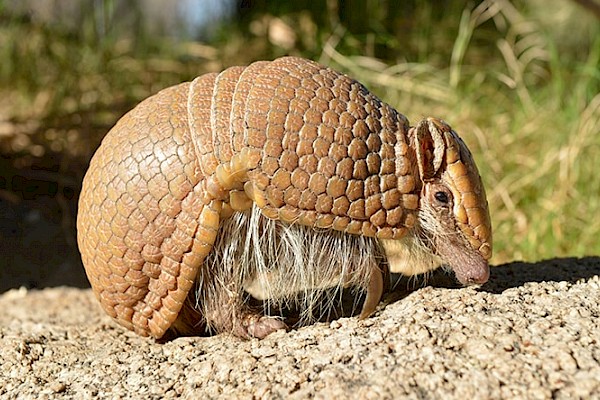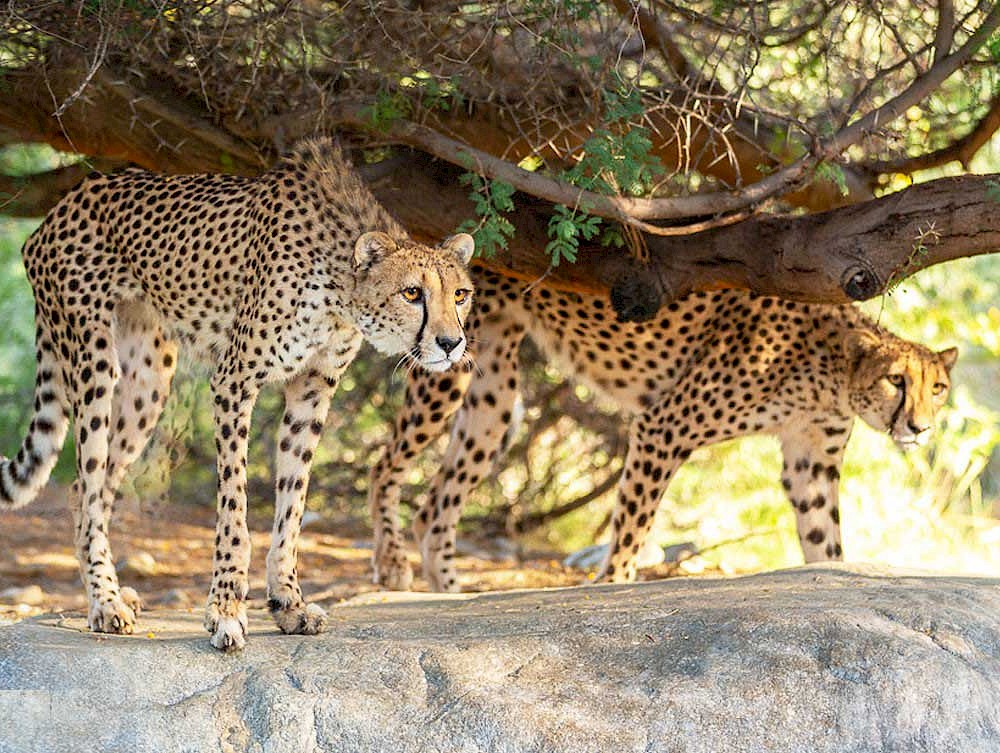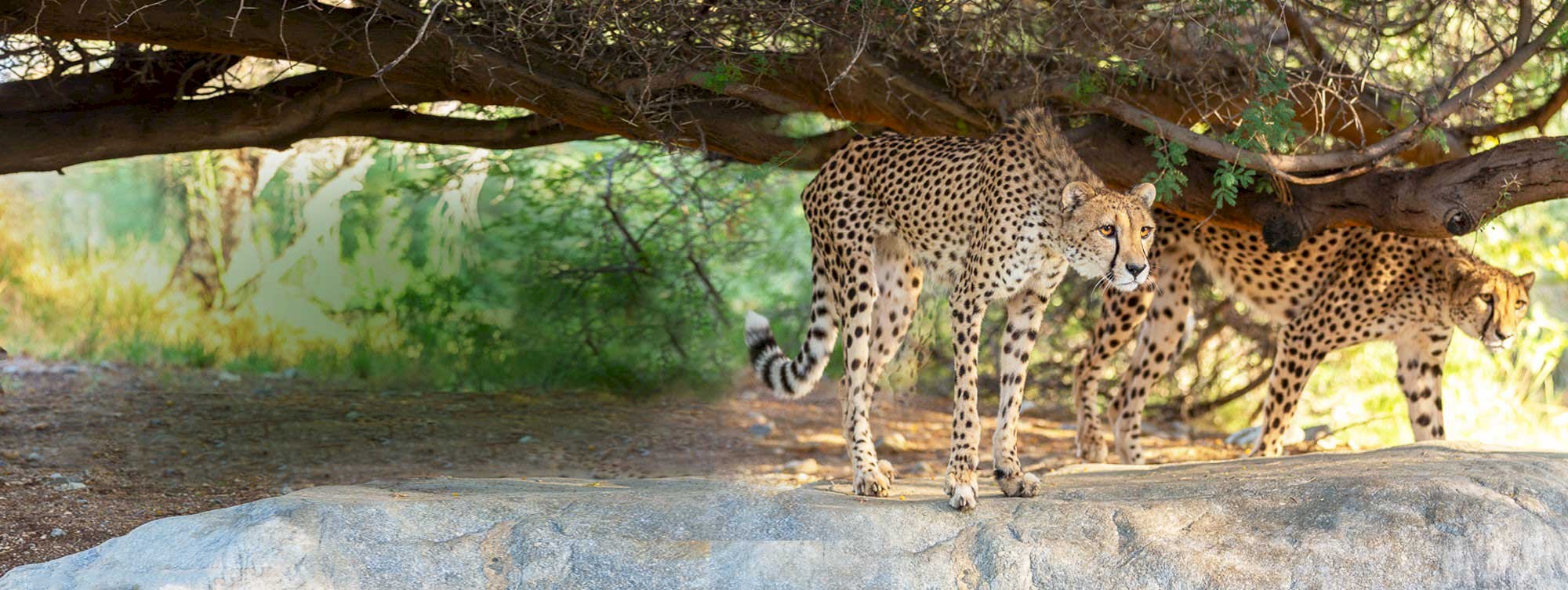

Southern Three-banded Armadillo
Tolypeutes matacusFamily
Dasypodidae, armadillo familyConservation Status
Near Threatened, IUCNRange
South America: north central Argentina, east central Bolivia and sections of Brazil and ParaguayHabitat
Grasslands or marshes near dry forests or savannah areasHighlights
The southern three-banded armadillo has an interesting mode of locomotion: walking on its hind-legs with the tips of the fore claws touching the ground.They are dark brown and heavily armored with a thick, leathery shell that is usually segmented into 3 bands. This armor covers the tail, head, feet, and back of the animal. The tail is very stout and immobile. The middle three toes on the back feet are grown together and have a thick claw. The fore feet toes are separated and have 4 claws.
The species has a broad diet, composed of a variety of invertebrates, particularly beetle larvae, which are taken throughout the year, along with large quantities of ants and termites during the dry season (July to November), and fruits during the summer rains. They use their strong legs and large claws to dig through insect colonies or under bark to get to their food. They can completely close their shell around the entire body. This shell is also very efficient at trapping air, which is warmed by body heat, and thus conserves heat loss.
This species is hunted throughout its range by man for its meat and is an important food source in some areas. When threatened, this species is capable of running remarkably quickly to escape, commonly curling into a ball, which even strong-jawed predators such as dogs are unable to break open. As an additional defense, while curled up, the southern three-banded armadillo will leave a small gap between the edges of the body shells open.
When the predator inserts a claw or snout into this gap in an attempt to reach the soft body parts, the armadillo quickly closes it, causing pain and possibly injury to the predator.









